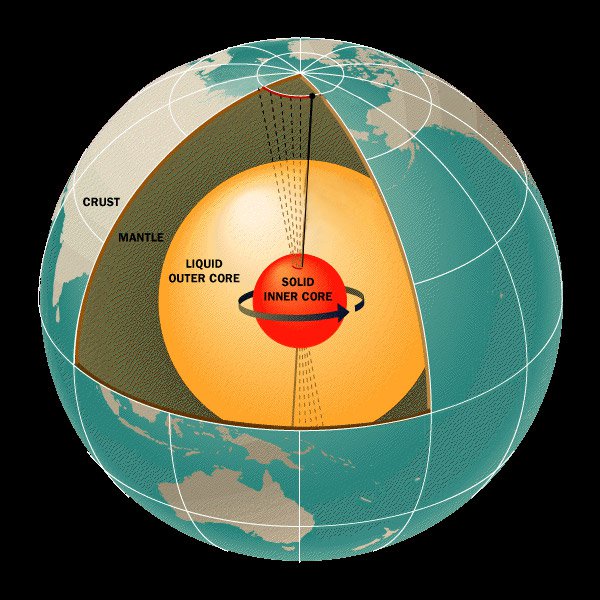Core research heats up
Theory about Earth’s core has scientists spinning

This NASA image shows the Earth’s layers, from the inner core to the crust.
March 29, 2023
The Earth’s core, formed over 3,200 miles below the Earth’s crust, has undergone a drastic change in motion as it stopped over the past years, according to a study by scientists at Peking University and acknowledged by their peers in the scientific community.
Recent studies from Yi Yang, an associate research scientist at Peking University, and Xiaodong Song, the Peking University chair professor, have surfaced that the Earth’s inner core, since 2009, has stopped rotating.
The rotation of the inner core is determined by the magnetic pull given off by the outer core and the magnetic balance of the inner core. These rotations give off seismic waves as it spins. These waves periodically change, and scientists are often able to notice a change in the periodic waves.
However, in recent years, there has been a change in the seismic waves’ records in which there has been little to no change. Due to these factors, scientists, such as Yang, have determined that the Earth’s core has stopped rotating and may begin a rotation on the axis in the opposite direction.
According to Mr. Kaler, a science teacher that many of you may know says “It is interesting if scientists can properly infer that the inner core is slowing down; however, I would not be too alarmed about this occurrence. While Earth’s core and its rotations give rise to our magnetic field which protects life from harmful solar winds, the north and south poles have “flipped” every several thousand years. This is borne out in the magnetic orientations in seabed rock formations. However, I am not aware that this normal cycle has given rise to extinction-level events in Earth’s history.”
Scientists have also determined that if the core has indeed “stopped,” or even slowed down, nothing cataclysmic will occur. Furthermore, rotations of the core don’t “stop,” for the Earth is also rotating along with the core. The Earth’s and the core’s rotation has just synchronized and shows very little change.
Although the core is experiencing changes in its rotation, these factors must not be taken in a manner that is 100 percent fact, but as a scientific inference, Yang and Song have agreed that more information is required in order to create a firm and suitable conclusion.
According to an article on weather.com, “None of these findings should be a cause for alarm since they could very well be a part of the periodic changes in the Earth’s geological dynamics.”
In addition, “But observing them could certainly help shine a light on the many mysteries of the deep Earth, including the role the inner core plays in maintaining the planet’s magnetic field and in affecting the speed of the whole planet’s rotation — and thus the length of a day.”
All in all, the core will not affect the daily lives of humans on the Earth’s crust, but it is still important to measure and record the data of the core’s rotation to understand the planet we live on.
